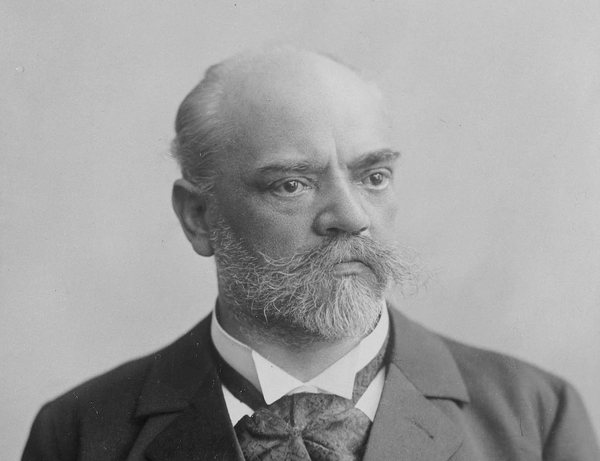‘Arts and Ideals: President John F. Kennedy’ summons a brief shining moment when the arts captured America’s imagination

The mandate of the John F. Kennedy Center for the Performing Arts in Washington DC, which has just concluded the celebration of its fiftieth anniversary, is far broader than that of being one of America’s premiere performing arts centers. Rather, as the nation’s cultural center, its goal is to invite art into the lives of all Americans and ensure it represents the cultural diversity of America.
An equally important component of the mission is to serve as a living memorial to the thirty-fifth President of the United States. A new permanent exhibit, Arts and Ideals: President John F. Kennedy, is an impressive, inspiring and often thought-provoking evocation of the man and his commitment to the arts.
The genesis of what was to become the Kennedy Center began in a climate of bipartisanship. One of the early voices urging the establishment of a national cultural center was that of Eleanor Roosevelt, wife of President Franklin D. Roosevelt. It wasn’t until 1958 and two presidential administrations later, however, that President Dwight D. Eisenhower signed bipartisan legislation creating a National Cultural Center in the nation’s capital.
In 1962, President and First Lady Jacqueline Kennedy launched a $30 million fundraising campaign for the Center’s construction. Former President Eisenhower and his wife, Mamie, participated in the event to demonstrate bipartisan support for a world-class center for the performing arts in Washington. Mamie Eisenhower and Jaqueline Kennedy were cochairs of the fundraising efforts. After President Kennedy’s assassination, an Act of Congress signed into law President Lyndon B. Johnson’s designation of the National Cultural Center as a living memorial to the slain president.
The Philadelphia-based architectural firm of KieranTimberlake headed the multi-faceted design team that transformed an atrium into the JFK Gallery with 7,500 square feet of exhibition space. The exhibit itself was designed and produced by Pentagram, the world’s largest independent design firm, in consultation with five nationally recognized historians with expertise ranging from the presidency to jazz and civil rights.
The exhibit is divided into four areas: Democracy, Social Change, The White House and Culture. Each area is anchored by archival videos of President Kennedy’s landmark speeches. He is heard in the Space Speech – ‘We choose to go to the Moon’ – in which he announced his plan for America to land a man on the moon before 1970. In the Report to the American People on Civil Rights, which President Kennedy delivered on radio and television from the Oval Office in 1963, he is heard proposing legislation that would become the Civil Rights Act of 1964.
The aura of glamour, elegance and sophistication associated with the Kennedy White House has not dimmed. If the President seemed most attuned to the poetry of Robert Frost, whom the exhibit deems ‘America’s Poet’, the First Lady’s interests were all-encompassing: the performing arts, the decorative arts, historic preservation, gardening and, of course, fashion.
The night when the world-renowned Spanish cellist Pablo Casals played at the White House is highlighted in the exhibition. A program of a performance by opera stars soprano Roberta Peters and bass Jerome Hines at a state dinner is also on display. Leonard Bernstein, who was a friend of the Kennedys, is hailed as ‘America’s Composer’.
Jacqueline Kennedy commissioned Bernstein to create a work to open the new performing arts center in 1971. Greeted with mixed reviews, Bernstein’s Mass is now considered one of the composer’s major artistic achievements, and it was revived earlier in September to conclude the Center’s anniversary celebrations.
Everything, however, was not highbrow. The voice of Broadway legend Ethel Merman is heard belting out ‘Everything’s coming up roses’. Photos and videos of Henry Belafonte, Aretha Franklin and Duke Ellington are a reminder of a White House where talent, not race, reigned. The arc of progress had begun earlier, however, when contralto Marian Anderson became the first African American to sing at a presidential inauguration, that of President Eisenhower in 1957. She would sing the National Anthem again four years later at President Kennedy’s inauguration.
For the First Lady, sophistication and American often went hand in glove. It was the American designer Oleg Cassini who created her fresh, clean style that became instantly popular. A display of dress patterns from the 1960s demonstrates its impact on American women. When new crystal was needed for the White House, Mrs. Kennedy ordered a simple pattern, later to become known as ‘The President’s House’, from West Virginia’s Morgantown Glass Company.
Perhaps most germane to the theme of the exhibit are excerpts from a speech that President Kennedy delivered at Amherst College less than a month before his assassination on 22 November 1963. He stressed the importance of public service from educated citizens and described the role of an artist in society, noting that while power has the tendency to corrupt, poetry, on the other hand, cleanses.
The President’s aspirations were summed up in these words: ‘I look forward to an America which will reward achievement in the arts as we reward achievement in business or statecraft. I look forward to an America which will steadily raise the standards of artistic accomplishment, and which will steadily enlarge cultural opportunities for all of our citizens’.
The ceremonial opening of Arts and Ideals was on 9 September, 51 years to the day from the opening of the Kennedy Center. Rose Kennedy Schlossberg spoke. She is one of two-thirds of all Americans who were not yet born when her grandfather was president.
Yo-Yo Ma also performed, a direct link to the past. In 1962, the seven-year-old prodigy played at the White House in a benefit concert called ‘The American Pageant of Arts’ with the President and Mrs. Kennedy, President Eisenhower, Leonard Bernstein and Pablo Casals in attendance. It was Casals who brought the young prodigy to national attention.
Shortly after the President’s assassination, Mrs. Kennedy, in referring to her husband’s administration, referenced both the myth of King Arthur and the 1960 Broadway musical Camelot in an interview with Life magazine. She likened those 1,000 days to ‘one brief shining moment’, quoting a line from a song in the musical that the late President had loved. She went on to say, ‘there will be great presidents again, but there will never be another Camelot’.
Arts and Ideals: President John F. Kennedy summons that long-ago time. For those who know little of President Kennedy, the exhibit is an invaluable introduction to the man, his times and his legacy. For many with memories of the era, including this writer, it summoned words and images seared in our minds. It was also a reminder of an America more united than it is today, when the arts mattered perhaps more than they have in the history of the United States of America.
‘Arts and Ideals: President John F. Kennedy’ is on the roof terrace level of the Kennedy Center, 2700 F St. NW. kennedy-center.org. Open daily from noon to midnight. Free.
By Rick Perdian. This article first appeared on Seen and Heard International.





